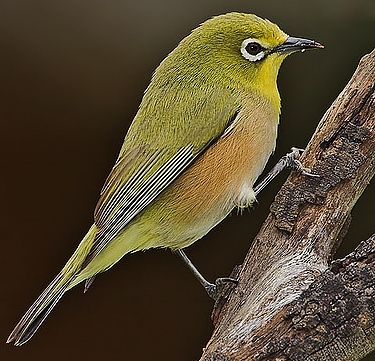 |
| (Photo from Flickrhivermind) |
Common name:
Cape white-eye (en); olho-branco-do-Cabo (pt); zostérops clair (fr); anteojitos de El Cabo (es); Kapbrillenvogel (de)
Taxonomy:
Order Passeriformes
Family Zosteropidae
Range:
This species is found throughout most of South Africa, with the exception of the kalahari desert, and it expands into southern Mozambique, south-eastern Mozambique and Namibia.
Size:
These birds are 12 cm long and weigh 10-12 g.
Habitat:
Cape white-eyes are found in a wide variety of habitats including dry savannas, evergreen forests, dune scrubland, inland wetlands, rural gardens, plantations and urban gardens.
Diet:
They are mostly insectivorous, often eating aphids, but also termite alates, butterflies, beetles, spiders and mantids. They also eat the fruits and nectar of various plants including wild figs and other native species, as well as introduced agricultural crops like oranges, pears, blackberries, plums and grapes.
Breeding:
The Cape white-eye breeds in August-April. The nest is built by both sexes, consisting of a small cup made of lichens, dry grass, rootlets, tendrils and other dry plant fibres, bound together with spider webs. The nest is concealed in the foliage of a tree or bush. The female lays 2-4 pale blue eggs, which are incubated by both sexes for 10-12 days. The chicks are fed by both parents and fledge 12-13 days after hatching.
Conservation:
IUCN status – LC (Least concern)
This species has a very large breeding range and is described as very common to uncommon. The population trend is difficult to determine because of uncertainty over the impacts of habitat modification on population sizes.







